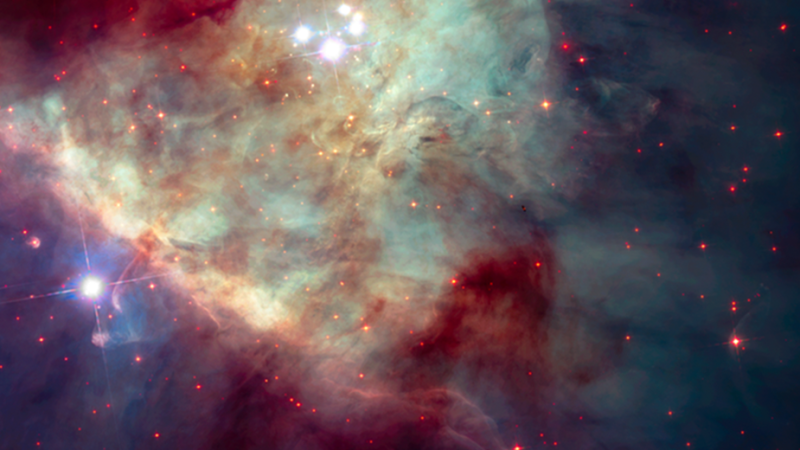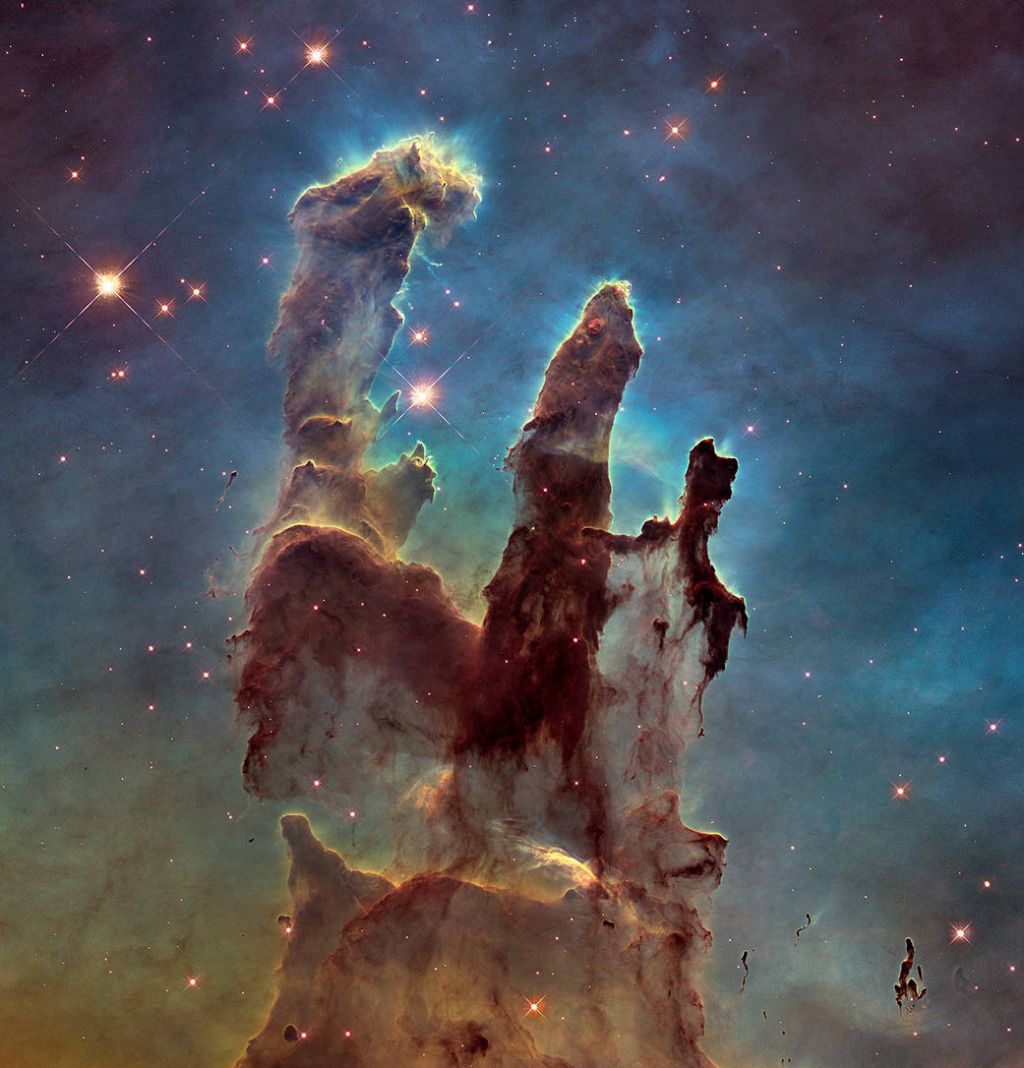James Webb Space Telescope plans probe of massive star radiation
The pressure blasts away gas and dust, greatly affecting the stars' local environment.

The James Webb Space Telescope will zero in on a portion of the famous Orion Nebula, the closest region of mass star-formation to Earth, to learn more about how massive young stars shape their environments.
The Orion Nebula, some 1,350 light-years away from Earth, is known as a stellar nursery. Dense clouds of gas and dust in this region collapse into stellar embryos that gradually grow bigger until the pressure and heat in their cores increases enough to trigger nuclear fusion.
Because of the amount of dust, the hearts of stellar nurseries are obscured from the view of optical telescopes. But infrared light, in which the James Webb Space Telescope will observe the universe, can penetrate those clouds and reveal the secrets of star formation.
Webb will study a portion of the Orion Nebula's irradiated cloud, called the Orion Bar, to see how massive young stars shape the environment in which they reside. At best, the team says, we may get more clues as to how our own solar system formed.
Live updates: NASA's James Webb Space Telescope mission
Related: How the James Webb Space Telescope works in pictures
The telescope will catalog the influence that winds and radiation from young stars have in their region early in their lives. It's a more emergent area of research, following decades of observations on how old stars exploding as supernovas change nearby regions, the Webb telescope's website said about the research.
The Orion Bar appears as a ridge within the larger cloud of dust and gas we call the Orion Nebula. Part of the constellation Orion, the region will be well within reach of Webb's vision after the telescope passes a rigorous commissioning period that should end in the summer.
Breaking space news, the latest updates on rocket launches, skywatching events and more!
Investigators term the bar a photodissociation region (PDR) that shows how ultraviolet light from the young stars creates a neutral, warm gas and dust zone. The zone straddles a region between the ionized (or electrically charged) gas surrounding the stars, and the clouds in which the stars are born, Webb officials said.
"This ultraviolet radiation strongly influences the gas chemistry of these regions and acts as the most important source of heat," Webb officials said of the stars' influence on the Orion Bar. The emissions will likely provide insights on various chemical and physical processes that influence star formation and evolution.
"The Orion Bar is probably the prototype of a PDR," Els Peeters, one of the team's principal investigators and a professor at the University of Western Ontario, said said in a statement.

"It's been studied extensively, so it's well characterized," Peeters added. "It's very close by, and it's really seen edge on. That means you can probe the different transition regions. And since it's close by, this transition from one region to another is spatially distinct if you have a telescope with high spatial resolution."
The study of the Orion Bar may help scientists understand what PDRs were like billions of years ago, during an era where there were starbirth factories present in many galaxies.

How planetary systems form in such irradiated conditions is still an unknown, so the hope is Webb will allow astronomers to gain more information about how ultraviolet radiation may affect the mass and composition of newborn planets and stars.
This work may even give insights for our own solar system, Webb officials said. "In particular, studies of meteorites suggest that the solar system formed in a region similar to the Orion Nebula," the release noted. "Observing the Orion Bar is a way to understand our past. It serves as a model to learn about the very early stages of the formation of the solar system."
PDRs are far more stratified than imagined by early studies of these regions. Webb officials likened the structure to a " layer cake" and said that the Orion Bar has at least four distinct zones. These include, in the statement's words:
- The molecular zone, a cold and dense region where the gas is in the form of molecules and where stars could form;
- The dissociation front, where the molecules break apart into atoms as the temperature rises;
- The ionization front, where the gas is stripped of electrons, becoming ionized, as the temperature increases dramatically;
- The fully ionized flow of gas into a region of atomic, ionized hydrogen.
Webb will allow the investigators to look at the transition zone between each of these regions, as well as to better study the individual regions' physical conditions, investigators said.
"We will study the passage from very hot regions to very cold ones. This is the first time we will be able to do that," Emilie Habart, one of the team's principal investigators and a scientist with the French Institute of Space Astrophysic, said of Webb's capabilities in the same statement.
The goal is to use the Webb studies at the Orion Bar to better understand how even more distant PDRs may work. Webb's cameras and spectrographs will allow for better resolution and wavelength coverage than before of the Orion Bar, investigators noted.
"We're very interested in spectroscopy because that's where you see all the 'fingerprints' that give you the detailed information on the physical conditions," Olivier Berné, also a principal investigator and a research scientist at the French National Centre for Scientific Research in Toulouse, said in the same statement.
"We also want the images to see the structure and organization of matter," Berné said. "When you combine the spectroscopy and the imaging in this unique infrared range, you get all the information you need to do the science we're interested in."
Follow Elizabeth Howell on Twitter @howellspace. Follow us on Twitter @Spacedotcom or Facebook.

Elizabeth Howell (she/her), Ph.D., was a staff writer in the spaceflight channel between 2022 and 2024 specializing in Canadian space news. She was contributing writer for Space.com for 10 years from 2012 to 2024. Elizabeth's reporting includes multiple exclusives with the White House, leading world coverage about a lost-and-found space tomato on the International Space Station, witnessing five human spaceflight launches on two continents, flying parabolic, working inside a spacesuit, and participating in a simulated Mars mission. Her latest book, "Why Am I Taller?" (ECW Press, 2022) is co-written with astronaut Dave Williams.
